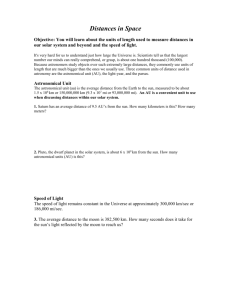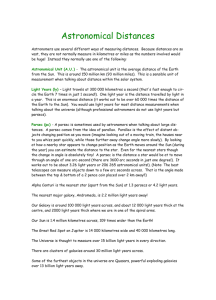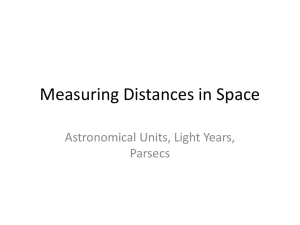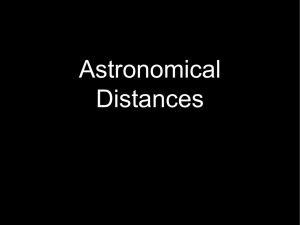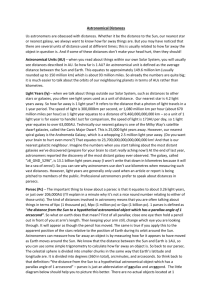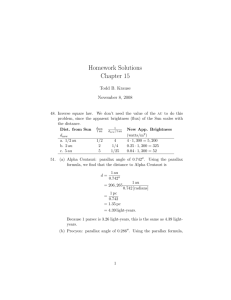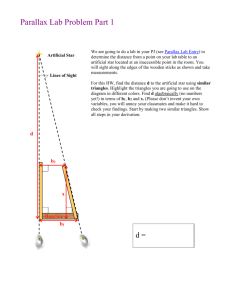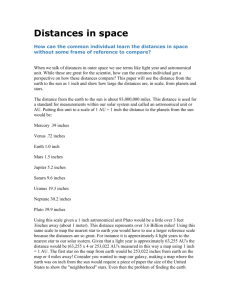Astronomical Unit Lab: Measuring Space Distances
advertisement
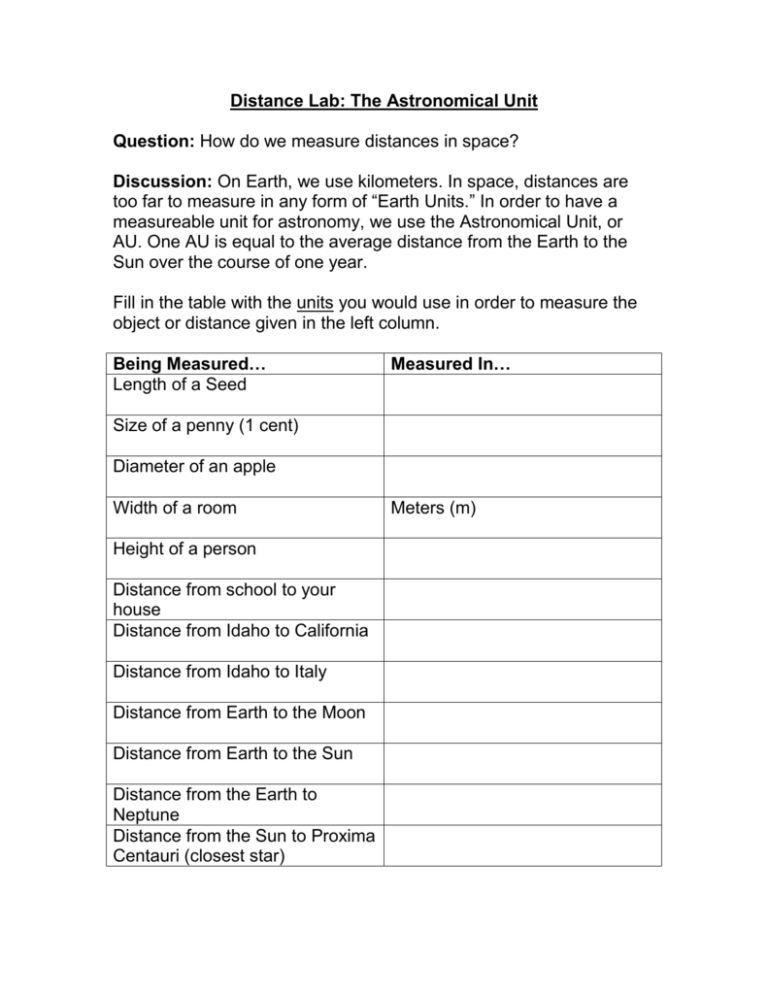
Distance Lab: The Astronomical Unit Question: How do we measure distances in space? Discussion: On Earth, we use kilometers. In space, distances are too far to measure in any form of “Earth Units.” In order to have a measureable unit for astronomy, we use the Astronomical Unit, or AU. One AU is equal to the average distance from the Earth to the Sun over the course of one year. Fill in the table with the units you would use in order to measure the object or distance given in the left column. Being Measured… Length of a Seed Measured In… Size of a penny (1 cent) Diameter of an apple Width of a room Height of a person Distance from school to your house Distance from Idaho to California Distance from Idaho to Italy Distance from Earth to the Moon Distance from Earth to the Sun Distance from the Earth to Neptune Distance from the Sun to Proxima Centauri (closest star) Meters (m) Astronomers soon found that even the astronomical unit was not large enough to measure the distance of objects outside of our solar system. For these distances, the parsec is used. A parsec is a unit of light-years. A parsec equals approximately 3.3 light-years. (Keep in mind that a lightyear is the distance light travels in one year – 9.5 trillion km – and that light travels 300,000 km per second!) A parsec is found using a method called parallax. Parallax is the apparent change in position of an object when you look at it from different viewpoints. 1. Define Astronomical Unit, Parallax, and light year in your notebook. Use page 104 in the textbook to help you out. 2. Parallax: Look up at the balloon globe hanging above the teachers’ desk. Behind the globe are some pictures of mountains and glaciers that are numbered 1-10. Which number do you see? 3. Move to the other side of the room for a moment, and look at the same globe. Which number image do you see now? 4. Which object moved, you or the balloon? How was the number able to change? 5. For astronomers to find the distance from Earth to a star, they would find the difference between the two numbers on the images behind the object. How are astronomers able to record measurements from two different locations? (Think of how the Earth moves). 6. Altair, a star in the constellation Aquila, is 16.6 light-years away, which means that the light we see now from that star left its surface 16 years and 219 days ago. What was happening on the Earth when the light we are seeing from Altair first left that star?
